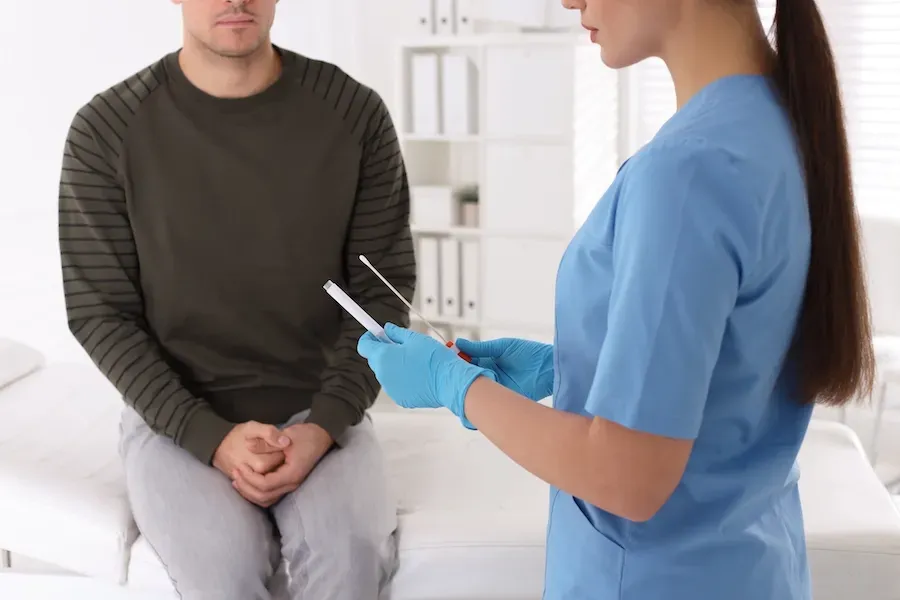Sexually transmitted diseases (STDs) can affect anyone who is sexually active. Testing is a crucial part of sexual health, helping individuals understand their status and take responsible steps. However, interpreting the accuracy of test results can be confusing. This article will help you understand the factors that influence STD test accuracy, the types of tests available, and what your results really mean. Lets delve into STD Checkup Dubai.
What Does Accuracy Mean in STD Testing?
Sensitivity and Specificity
Two key terms used to describe the reliability of STD tests are sensitivity and specificity.
- Sensitivity refers to how effectively a test identifies people who have the disease. A highly sensitive test minimizes false negatives.
- Specificity refers to the test’s ability to identify people who do not have the disease. A highly specific test reduces the chance of false positives.
Both are essential for accurate diagnosis, but no test is perfect. A balance between sensitivity and specificity ensures reliable results.
False Positives and False Negatives
- A false positive occurs when a test indicates an infection when none is present.
- A false negative occurs when a test fails to detect an existing infection.
These outcomes can create confusion, stress, or a false sense of security. Understanding the likelihood of such results helps in making informed decisions.
Types of STD Tests and Their Reliability
Blood Tests
Blood tests are commonly used to detect infections such as HIV, syphilis, and herpes. These tests often have high sensitivity and specificity, but timing plays a crucial role. For example, detecting antibodies might take weeks after exposure. Testing too soon may lead to a false negative.
Urine Tests
Urine samples are frequently used to screen for chlamydia and gonorrhea. These tests are convenient and generally reliable but may be less sensitive than swab tests, especially in detecting infections in the throat or rectum.
Swab Tests
Swabs taken from the genitals, throat, or rectum can detect a range of STDs. These tests are particularly accurate when symptoms are present and can also help identify the specific location of an infection.
Rapid Tests
Rapid tests deliver results within minutes and are widely used for conditions like HIV and syphilis. While they offer quick results, they may sometimes be less accurate than laboratory-based methods and usually require confirmation with a follow-up test.
The Role of Timing in STD Test Accuracy
Window Periods
Every STD has a window period—the time between exposure and when a test can accurately detect the infection. Testing during the window period may produce a false negative because the body hasn’t developed enough detectable markers such as antibodies or viral DNA.
Here are some general window periods:
- HIV: typically 2–4 weeks
- Syphilis: around 3 weeks
- Chlamydia and Gonorrhea: 1–5 days
- Herpes: 2–12 days after symptom onset
Understanding the right time to get tested based on potential exposure is essential for obtaining accurate results.
Repeat Testing
In some cases, repeating a test after the window period ends is advised. This follow-up test helps confirm the initial results and offers peace of mind.
How to Interpret Your Test Results
Negative Results
A negative result generally means no infection was detected at the time of testing. However, if testing occurred during the window period or the infection is located in a site that wasn’t tested (e.g., oral or rectal), the result might not be definitive.
Positive Results
A positive result indicates the presence of an STD Screening Dubai. It’s important to remember that many STDs are treatable, and some are curable. A positive result should always be followed up with medical consultation and, if necessary, further testing to confirm and identify the infection accurately.
Factors That Influence Test Accuracy
Type of Sample Collected
The site and quality of the sample can greatly affect results. For example, a throat swab may be required to detect certain infections acquired through oral contact, which might be missed by urine tests.
Testing Method
Laboratory-based tests are generally more reliable than rapid or at-home tests. The methods used—such as nucleic acid amplification tests (NAATs) or enzyme-linked immunosorbent assays (ELISAs)—have different strengths depending on the infection.
Timing of Test
Testing too early after potential exposure can lead to false negatives. It’s crucial to wait for the appropriate window period and, in some cases, to retest if there are ongoing symptoms or exposure risks.
Infection Stage
The stage of infection affects detectability. For example, some tests might not identify early-stage syphilis or herpes. In such cases, follow-up testing is important to catch the infection later in its progression.
Why Confirmation Testing Matters
In certain cases, a single test is not enough. If a rapid test or screening returns a positive result, confirmation through a second, more specific test is often recommended. This two-step process helps reduce false positives and provides a more definitive diagnosis.
Reducing Your Risk and Staying Informed
Routine Testing
Regular screening is key to maintaining sexual health. Even in the absence of symptoms, STDs can be present and transmissible. Routine testing helps detect infections early and prevents further transmission.
Open Communication
Talking openly with partners about testing history and potential risks helps build trust and encourages responsible behavior. It’s a valuable part of any healthy sexual relationship.
Understanding Your Body
Recognizing unusual symptoms and knowing when something doesn’t feel right can prompt timely testing. Staying aware of your health empowers you to seek care early and make informed decisions.
Conclusion
Understanding the accuracy of STD test results involves more than just reading a report. It requires awareness of test types, timing, and the biological realities of each infection. While no test offers 100% certainty, modern diagnostic tools are highly reliable when used correctly. Staying informed, testing at the right time, and following up when needed are key steps in managing sexual health responsibly.









